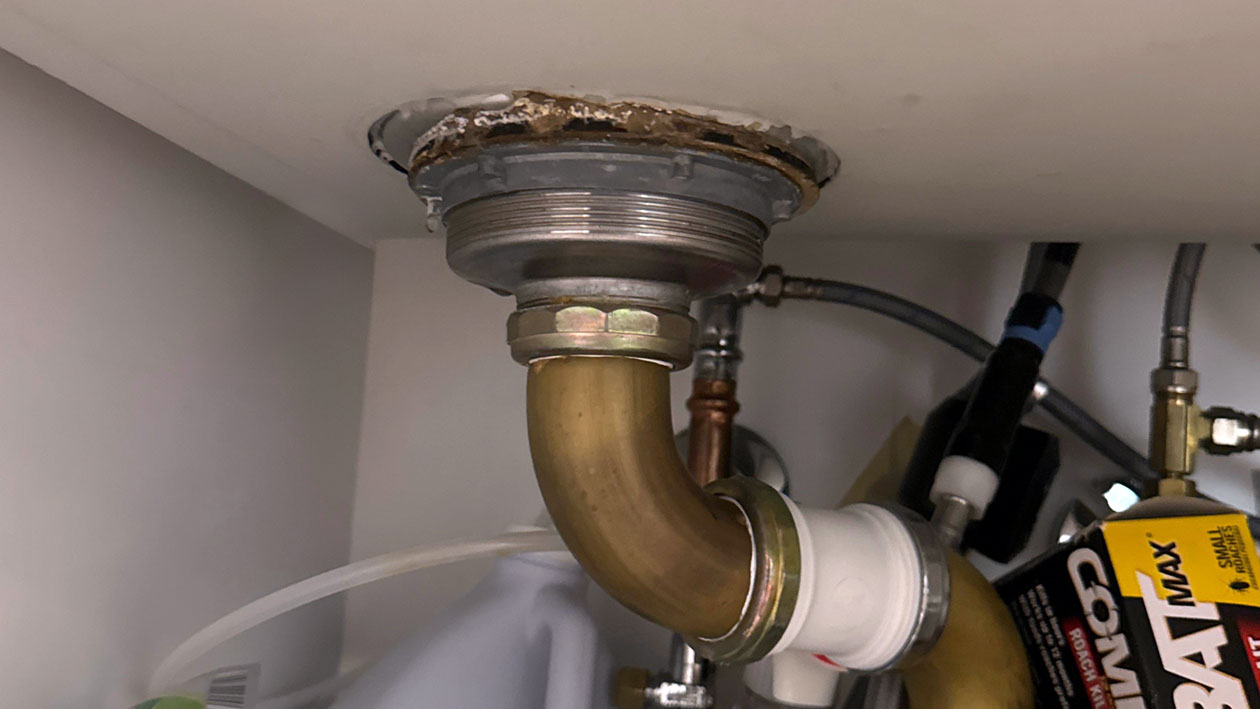Removing hardened plumber’s putty requires breaking down its oil-based compounds. The most effective method is to use a combination of gentle heat from a hairdryer to soften the putty and a plastic putty knife to scrape it away. For extremely stubborn putty, a small amount of mineral spirits applied with a cloth can help dissolve the residue without damaging most surfaces.
In this guide:
What is Plumber’s Putty?
Plumber’s putty is a pliable, oil-based sealing compound used to create watertight seals around taps and drains. It remains soft for a long time, does not bond surfaces, and is designed to be removable.
How to Remove Hardened Plumber’s Putty: A Step-by-Step Guide
To remove hardened putty, you must first soften it. Use a hairdryer on a low setting for 30-60 seconds, then carefully pry the putty off with a plastic putty knife or razor blade. For remaining residue, wipe the area with a rag dampened with mineral spirits.
Method 1: Mechanical Removal (For Mostly Pliable Putty)
Best For: Putty that is old but not rock-hard.
What You’ll Need:
- Plastic putty knife
- Utility knife
- Clean rags
Step-by-Step Process:
- Test the putty’s hardness by pressing with your fingernail. If it leaves an indent, mechanical removal will work.
- Insert the edge of a plastic putty knife under the putty at its thinnest point.
- Gently work the knife along the putty’s edge, lifting as you go.
- For thicker sections, score the surface with a utility knife to create removal points.
- Pull away loosened chunks with your fingers or needle-nose pliers.
- Use the putty knife to scrape away remaining bits.
- Wipe the surface clean with a dry rag to remove loose particles.
Method 2: Heat Application (For Very Hard Putty)
Best For: Dried, stubborn putty around drains and taps.
What You’ll Need:
- Hairdryer or heat gun (on low setting)
- Plastic putty knife
- Heat-resistant gloves
- Clean rags
Step-by-Step Process:
- Put on heat-resistant gloves for protection.
- Set your hairdryer to low-medium heat (never use high heat near plastic fixtures).
- Hold the hairdryer 10-15 centimetres from the putty.
- Apply heat in 30-60 second intervals, moving the hairdryer constantly to prevent damage.
- Test the putty with your plastic knife after each heating interval.
- Once softened, slide the plastic putty knife under the putty’s edge.
- Gently pry and lift the softened putty away from the surface.
- Reheat stubborn sections as needed, working in small areas.
- Remove loosened putty immediately before it cools and hardens again.
Method 3: Solvent Application (For Final Residue)
Best For: Removing the oily film or final stubborn bits.
What You’ll Need:
- Mineral spirits or methylated spirits
- Clean, lint-free rags
- Rubber gloves
- Good ventilation
Step-by-Step Process:
- Open windows or ensure proper ventilation in your work area.
- Put on rubber gloves to protect your hands.
- Dampen a clean rag with mineral spirits (don’t oversaturate).
- Test the solvent on a hidden area first to check for surface damage.
- Apply the dampened rag to the putty residue and let it sit for 2-3 minutes.
- Rub in circular motions to break down the oily residue.
- Use a plastic scraper to remove any softened putty.
- Wipe the area with a fresh, solvent-dampened rag to remove all traces.
- Clean the surface with warm, soapy water to remove solvent residue.
- Dry thoroughly with a clean towel.
Once the putty and residue are gone, you can proceed with other tasks like fixing the cause of a leaking toilet base or resealing a drain.
Common Mistakes to Avoid
Mistake #1: Using a metal scraper on surfaces like stainless steel or porcelain, causing scratches.
Mistake #2: Applying too much heat too quickly, which can damage plastic parts.
What Actually Dissolves Plumber’s Putty? (And What Doesn’t)
Oil-based solvents are most effective. Plumber’s putty is oil-based, so solvents like mineral spirits work well. Water-based solutions like vinegar are ineffective and will not dissolve the putty.
| Method/Solvent | Effectiveness | Surface Safety | Use Case |
|---|---|---|---|
| Mechanical (Scraping) | High | High (with plastic tool) | First line of attack |
| Heat Application | Very High | Moderate (caution on plastic) | For rock-hard putty |
| Mineral Spirits | High | High (test first) | Residue removal |
| Methylated Spirits | Moderate | High | Less effective, but good for final cleanup |
| WD-40 | Low-Moderate | High | Can help soften, but not a true solvent |
| Vinegar | None | High | Ineffective |
How to Solve Common Putty Removal Problems
Is your problem the bulk putty or the oily film left behind? If it’s the bulk, return to heat and scraping. If it’s the film, use a solvent.
Problem: The putty is hard as a rock and won’t budge.
Solution: Apply heat in 60-second intervals, allowing it to penetrate. Use the corner of a sharp utility knife to carefully score the surface before prying.
Problem: I’ve removed the putty, but there’s a stubborn, oily stain.
Solution: This is where mineral spirits excel. Apply to a clean rag and wipe in a circular motion. Follow up with a standard kitchen cleaner.
Problem: I think I’m dealing with epoxy putty, not plumber’s putty.
Solution: Plumber’s putty never fully cures rock-hard and can usually be dented with a fingernail. Epoxy cures into a hard, plastic-like substance. Epoxy removal is much more difficult and often requires specialised solvents or mechanical grinding.
Frequently Asked Questions
Is plumber’s putty permanent?
No, it is not an adhesive and is designed to be removable. Over many years, it can dry out and harden, making removal difficult.
Where should you not use plumber’s putty?
Knowing the right sealant for the job is one of the most important parts of DIY plumbing to avoid causing damage. Never use it on plastic threads or porous materials like granite or marble, as its oils can cause stains. Use 100% silicone sealant for these applications.
How often should you replace it?
Replace plumber’s putty any time you remove or replace a fixture. Old putty will not reseal properly.
If you’re removing putty as part of a larger repair and find yourself overwhelmed, it might be time to call for professional leaking tap repairs. The team at TrueFlow Plumbing and Drains will be glad to help you, give us a call today.



